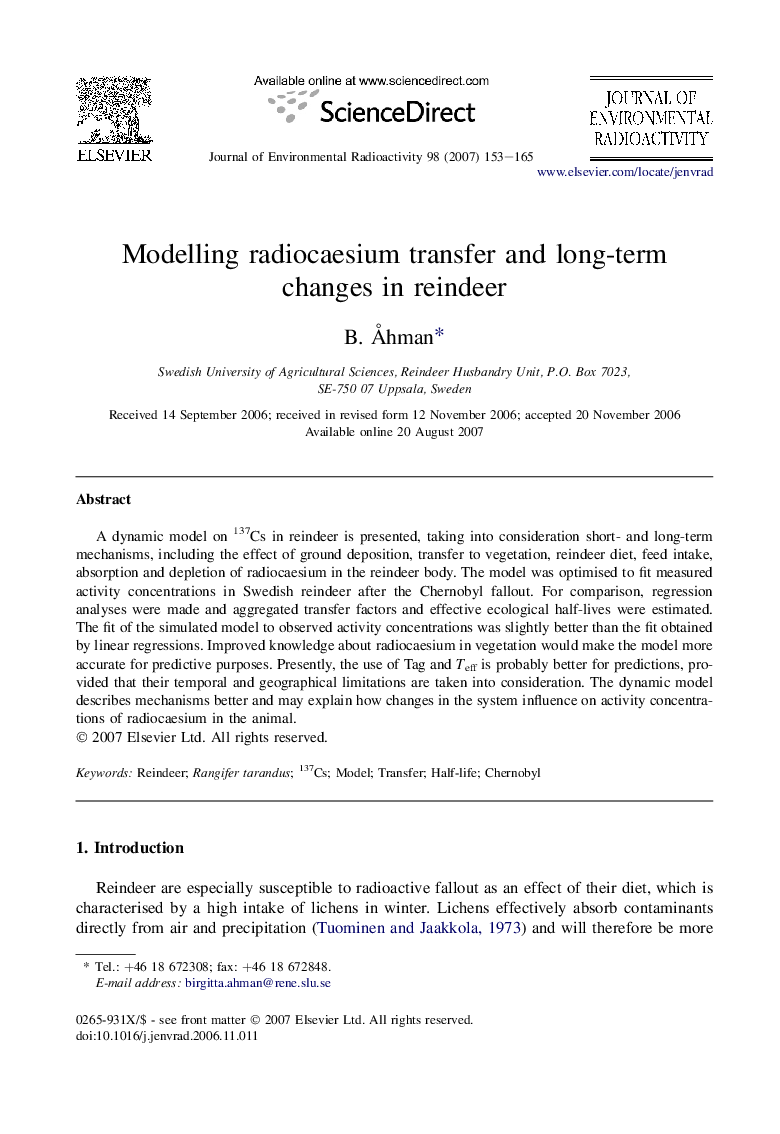| Article ID | Journal | Published Year | Pages | File Type |
|---|---|---|---|---|
| 1739394 | Journal of Environmental Radioactivity | 2007 | 13 Pages |
Abstract
A dynamic model on 137Cs in reindeer is presented, taking into consideration short- and long-term mechanisms, including the effect of ground deposition, transfer to vegetation, reindeer diet, feed intake, absorption and depletion of radiocaesium in the reindeer body. The model was optimised to fit measured activity concentrations in Swedish reindeer after the Chernobyl fallout. For comparison, regression analyses were made and aggregated transfer factors and effective ecological half-lives were estimated. The fit of the simulated model to observed activity concentrations was slightly better than the fit obtained by linear regressions. Improved knowledge about radiocaesium in vegetation would make the model more accurate for predictive purposes. Presently, the use of Tag and Teff is probably better for predictions, provided that their temporal and geographical limitations are taken into consideration. The dynamic model describes mechanisms better and may explain how changes in the system influence on activity concentrations of radiocaesium in the animal.
Related Topics
Physical Sciences and Engineering
Energy
Nuclear Energy and Engineering
Authors
B. Ã
hman,
